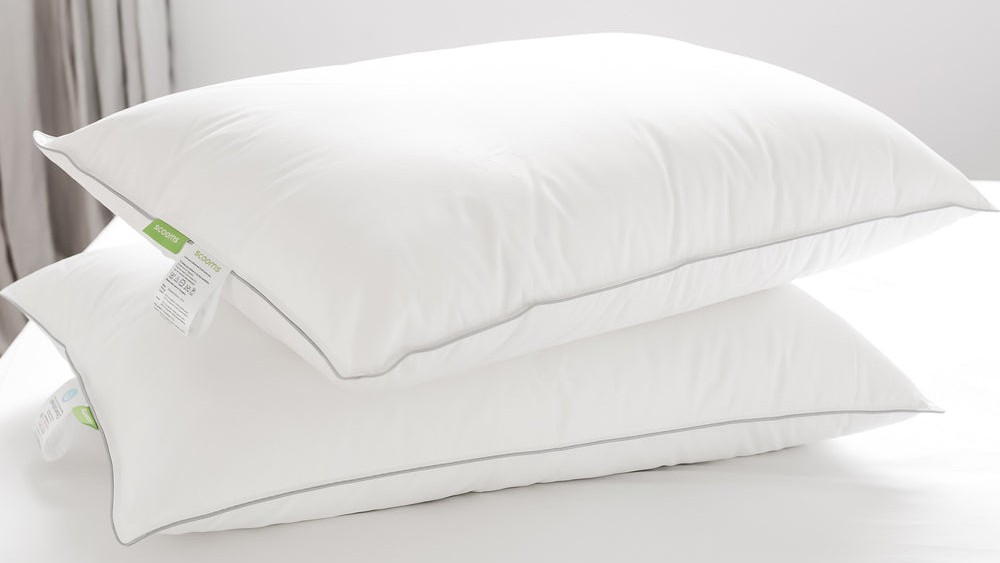How often should you replace your pillow?
Ageing pillows can cause pain, discomfort, allergy flare-ups and poor health. Our guide explains when to replace them

It's a bit weird, when you think about it. We spend around a third of our lives with our head in a pillow. And that adds up to a LOT of hours. (Assuming you sleep eight hours a night it's 2,920, or more than 120 full days, every year.)
Unfortunately, even the best pillows can, over time, become a potential breeding ground for dust mites, fungus, mould and bacteria. And that can provoke allergies, exacerbate eczema and cause other health issues, particularly in people with asthma or other underlying health conditions
That's not all. An ageing pillow will lose its shape and no longer support your head, neck and shoulders adequately (there are good and bad postures for sleep, but having a properly supported head is key), leading to pain and discomfort. And that can cause long-term damage to your posture and spinal health, if not addressed quickly.
So how long should you wait before replacing a pillow? Well, the general rule of thumb is between 18 months and three years after you first start using it. But within that, there's obviously a lot of variation.
Types of pillow and when to replace them

A memory foam pillow, such as the Eve Memory Pillow, is likely to last longer than a polyester one
Broadly speaking, a more expensive pillow is probably going to last longer than a cheap pillow: you really do get what you pay for. But the type of pillow you have is also an important consideration.
- Memory foam pillows will typically need replacing every two to three years
- Down and feather pillows normally last between one and three years
- Polyester and down-alternative pillows are less durable, and are likely to last somewhere between six months and two years
- Latex pillows, in contrast, can endure for anywhere between two and four years
However, don't take these figures as gospel: they're only estimates. A more accurate way to determine when you should replace your pillow is to look for the following signs.
Signs you should replace a pillow

Need a new pillow? Scooms Hungarian Goose Down Pillow is a great choice
1. You're experiencing pain and stiffness
Get all the latest news, reviews, deals and buying guides on gorgeous tech, home and active products from the T3 experts
Sagging pillows can cause problems in your head, neck and shoulders, as they are not being adequately supported for hours on end. But while tension headaches and back pain are a clear sign you may need to replace your pillow, discomfort in other areas in the body may also be connected. For example, people with poor spinal health often get pains in their feet, because their body as a whole is compensating for bad posture and lack of balance. So if you're experiencing any unusual type of pain, stiffness or discomfort, a change of pillow is one of the things you should consider.
2. Your allergies are playing up
Dust mites, bacteria, mould and other unpleasant invaders are always attracted to the warm, humid environment of a pillow, filled with dead skin cells for them to feed on. And while proper hygiene can be successful at keeping them at bay, time is ultimately your enemy here. So if you're experiencing itchiness, eye watering, congestion, sneezing or nose running, or other allergies like eczema are playing up, it could be time to call it a day and replace your pillow.
3. Your pillow has lost its shape
Perhaps the most obvious sign that your pillow needs replacing is when it loses its shape. Rather than plump and fluffy, it looks limp and lifeless. That means it's going to be uncomfortable to sleep on, leaving you drained and unrested in the morning, and building up potential problems in your head, neck and shoulders.
If you can't tell by looking, an easy test is to place the pillow on a flat surface and press down. It should spring back, into shape; if it doesn't, it needs replacing. A similar method is to fold your pillow in half, and place a slipper on top. Let go, and if the slipper doesn't fly into the air, it's a sign your pillow is past its prime.
How to make your pillows last longer
Want to make your pillow last as long as possible? Then there are a number of things you can do. Firstly, you can buy a protective pillow cover. This is essentially the pillow equivalent of a mattress protector, in that it covers your pillow and lies under your pillowcase, to add an extra layer of protection for the central insert. It can also be washed much more easily than a pillow can (we'll get on to that very shortly). If you're in the US, we recommend Brooklyn Pillow Protectors while those in the UK should check out the Slumberdown Teflon Protection Pillow Protector Pair.
As well as washing your pillow cases weekly, you should clean the pillow itself every four to six months. Some pillows need to be hand-washed, so always check the label and read our article on how to clean a pillow. If your pillow can be machine-washed, add a couple of tennis balls to prevent the filling from clumping. But however how wash it, the most important thing is to air-dry your pillow thoroughly before returning it to your bed, or you risk mould from forming.

Tom May is a freelance writer and author of the book, Great Ted Talks: Creativity. He has been editor of Professional Photography magazine, associate editor at Creative Bloq, and deputy editor at net magazine. He has also worked for a wide range of mainstream titles including Radio Times, NME, Heat, Company and Bella.
